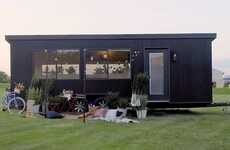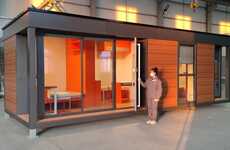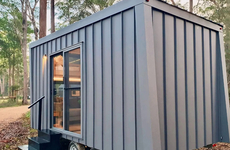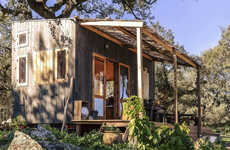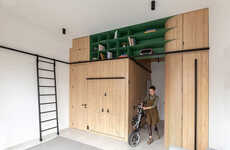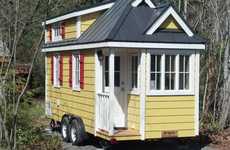
Joel Weber Builds a 145 Square Feet House to Save on Room and Board
Meghan Young — July 8, 2015 — Eco
References: facebook & mymodernmet
Paying for collage is steep enough, factor in room and board and the financial repercussions often seem insurmountable -- but not for Joel Weber. He took it upon himself to design and build his own home in order to avoid such a headache. A student at the University of Texas, Joel Weber built an eco-friendly loft that measures only 145 square feet. Considering the sizes of dorms, it's quite a comfortable space.
Although limited in area, Joel Weber's home boasts all the amenities of a full-sized house including working plumbing and electricity, a shower, a propane-powered stove and more. He says, "I saved up quite a bit and what I didn’t have, family, friends, and the community around me donated materials. I designed it and worked with a carpenter and electrician who both volunteered their time."
Although limited in area, Joel Weber's home boasts all the amenities of a full-sized house including working plumbing and electricity, a shower, a propane-powered stove and more. He says, "I saved up quite a bit and what I didn’t have, family, friends, and the community around me donated materials. I designed it and worked with a carpenter and electrician who both volunteered their time."
Trend Themes
1. Sustainable Micro Homes - The trend of building small, eco-friendly homes is disrupting the traditional notion of housing, providing a more affordable and sustainable alternative for individuals.
2. DIY Home Construction - The trend of individuals designing and building their own homes opens up opportunities for cost savings and customization, challenging the traditional home construction industry.
3. Collaborative Building Networks - The trend of communities and networks coming together to donate materials and volunteer skills for home construction demonstrates a shift towards collective action and support in the housing sector.
Industry Implications
1. Real Estate - The real estate industry can explore the market potential of sustainable micro homes and cater to the growing demand for affordable, eco-friendly housing.
2. Construction - The construction industry can adapt its practices to support the DIY home construction trend, offering resources and services tailored to individuals building their own homes.
3. Nonprofit Organizations - Nonprofit organizations specializing in housing initiatives can leverage the collaborative building networks trend to facilitate community-driven projects and provide assistance to those in need.
6.7
Score
Popularity
Activity
Freshness

